This dossier showcases a collection of creative works that have inspired me, and my thoughts on them, over the period of August - October 2023.
1: Sun & Sea (Marina)
Lapelytė, Lina, Vaiva Grainytė and Rugilė Barzdžiukaitė, dir. Sun & Sea (Marina), 2019, site-specific installation opera performance, 1 hr, Venice Biennale. https://sunandsea.lt/en
-
I find the thematic contrast between freedom and entrapment really compelling in this piece.
Lying on a beach is strongly associated, perhaps the most associated image, with being on holiday. Yet the holiday-goers are in a simulation of a beach, trapped by walls, and watched by viewers above, almost like surveillance cameras.
Whilst partaking in mundane activities; reading, drinking from a water bottle, napping, checking phone, the performers sing. They sing both solo and collectively throughout the piece.
In contrast to the leisurely setting and activities, the content of the opera's pieces that the performers sing is centred around the deterioration of the earth due to the effects of climate change.
Why is this so effective?
Two disparate things not generally placed side by side, indeed even could be called their own opposites: holidays and anxiety. Two contexts shifted and plonked on top of each other. What would be much less effective would be if the performers were in a simulation of a half-burnt forest, or a bleached coral reef. Because the initial scene is calming, the content of the opera itself is jarring, underscored by the harmonic beauty of the voices together. It makes the once-safe no longer safe, and in the same stroke, makes the familiar unfamiliar, like (arguably) all good art does.
Yes, it is on a beach - a relaxing sight. But the beach is fabricated, and is inside. It is filled with bright colours and human-made materials, and there is no ocean. A discomforting phenomenon, and to make it worse, there's no escape.
11 August 2023
2: Memoria
Weerasethakul, Apichatpong, dir. Memoria. Columbia. 2021. Kanopy video. 1 hr., 42 min. Accessed August 18, 2023. Kanopy.
-
The experience of watching this film is like having a very long, vivid dream; utterly bizarre one minute and incredibly banal the next. I found myself often wanting to speed up the narrative or 'look around' (as in VR) the scene. My patience was, however, rewarded for staying with it, through some truly unique and strange magical realist moments which put the film as a whole into a coherent picture. Tilda Swinton and Apichatpong Weerasethakul are perfect together as lead actor and director, both being interested in and having a palpable sense of mesmerising unreality.
19th August 2023
3: April Mood
Frankenthaler, Helen. April Mood. 1974. Acrylic on canvas, 152 x 434 cm. Courtesy of ASOM Collection. ARS, NY and DACS, London 2022
-
Look at those colours! Look at that composition! It's so balanced and it all fits together. What makes it work?
Here are my guesses:
-The play between big swathes and thin lines
- The play between saturated and muted colours and tones
- The play between demarcation and the inverse
- Its matte quality, which plays down the intensity of the texture, material and colours
- Its scale.
I'm often very drawn to colourful painterly abstraction. Maybe because my brain is so literal and wordy, escaping into the nonverbal is best exemplified for me with something like abstract painting. Unlike dance (which I'd consider a similar level of abstract meaning), abstract painting is something I can actually do.
I hesitate to call it 'escape', actually- moving from representation to abstraction feels more like changing language and through that is a form of therapy; exercising a different part of my brain and mind.
25 August 2023
4: O Superman
Laurie Anderson. "O Superman." Track 6 on Big Science. Originally released 1982. Warner Records. Spotify streaming audio.
-
I. LOVE. LAURIE.
She released this 41 years ago?! But how is it still spot on?
There's the cliché; good art is timeless.
There's the cliché; good art is timeless.
What makes this work?
My guesses:
- Some serious sonic play. Play between staccato accapella hums and stops, with smooth talking or flowing melody on top. Talking combined with the voice as almost a percussive instrument (which stays melodic).
- She's making a gut punch comment, which is funny, ironic and sad, but not taking itself too seriously. It still hits 41 years on.
- She's a woman not making work directly about being a woman. It isn't gendered.
- Character and verbal play:
"This is your captain speaking."
"Your Captain says: Put your head on your hands.
Captain says: Put your hands on your head.
Put your hands on your hips. Heh heh."
Put your hands on your hips. Heh heh."
She's playing around with language and social conventions, which is funny and brilliant. Then:
"But who is this really?"
"This is the hand,
the hand that takes"
And that line somehow seems to make so much sense.
30 August 2023
5: Bahnhof (Train station)
Völker, Karl, Bahnhof (Train station), 1924-1926. Oil on wood. Centre Pompidou.
-
Anomie. Anonymity. Industrialisation. Overpopulation. Sameness.
This could be any city anywhere in the world but we recognise it, 100 years on.
What I find particularly powerful about this work is the visual implication of the word 'spill' (or the German translation I guess), as in "the people spilling out of the train".
And that the focus is on these people, who are focused, in turn on something behind us. This something is probably along the lines of work, the city, and by extension, some idea of 'the future', be it good or bad. But the focal point is this mass of people in the very moment that they're heading towards it.
4 September 2023
6: Missing One Another
Beaumont, Clark, Missing One Another, 2016. Performance, 1 hr, Brisbane Festival. http://www.clarkbeaumont.com/index.php/work/missing-one-another-2016/
-
In this work, Clark Beaumont performatively take different memories of the same social interaction and splice together interpretations of 'what really happened' . Through dance, movement and speech, they play around with social norms and assumptions, highlighting the unreliability of memory and point toward our desperate search for authentic human connection/understanding. It's funny, engaging, relatable and very lateral.
10 September 2023
7: Drape in the Wind
Vogel, François (@francois.vogel). "Drape in the Wind". Instagram. October 19, 2021. Accessed 17 September, 2023. https://www.instagram.com/p/CVLJQoDoCcZ/
-
François Vogel is an artist who manipulates the photographed or filmed image in a variety of strange and beautiful ways.
Beyond the captivating aesthetic of his work, I think I'm most interested in how he remains completely dedicated to exploring the glitch. This could be in terms of digital glitches, but also a more phenomenological glitching of subjective experience and time.
His work highlights the zany way we really experience the world, ironically through using digital techniques from the very technology that makes us assume a digital image is the objective truth (i.e., the camera).
17 September 2023
8: The Dance
Rego, Paula Figueiroa, The Dance, 1988. Acrylic on paper laid on canvas, 212.6 cm x 274 cm. Tate.
-
Paula Rego, who I only discovered recently. is a painter loosely tied to neo-expressionism.
I like how even though Hal Foster basically shut down neo-expressionism with his claim of 'expressive fallacy', I don't think it makes Rego's work redundant. It's so obviously concerned with inauthenticity and the uncanny; it's (I think) pointedly bizarre and that's its beauty. Apparently she paints from dolls and that in itself confirms the intentional uncanny valley that she creates.
23 September 2023
9: "the story changes the body changes (repeating)" / Einstein on the Beach
Wai Kin, Sin, "the story changes the body changes (repeating)". 2022. Performance, 42min. Guggenheim Museum, https://www.youtube.com/watch?v=J-dIjAUsnOQ&ab_channel=GuggenheimMuseum
-
I find Sin Wai Kin's work theatrical, mysterious, and again - uncanny. The set and some of the absurdist theatricality, slick minimalist aesthetic and almost mathematical precision makes me think of the 4hr30 minute opera Einstein on The Beach by Philip Glass (image below photos of Wai Kin's work).
Wai Kin's work is character-driven, with this one featuring a circular narration between a personification of the universe as newsreader named The Storyteller, and another majestic robed being named Change. As the youtube description states, "the performance examines how by crafting fantasy it is possible to manifest new realities"
I'm really drawn to The Storyteller's repeating line "Today's top story:" followed by nonsensical/mythical/banal dialogue; I employ a similar verbal repetition in some of my performative work. Similarly, I love the linguistic play of this line:
"And how do you decide what to do with your body once you are once you are once you are once..."
As well as the above, I appreciate Wai Kin's questioning of gender and the queer themes that appear throughout their work.
Also see this portrait of Sin Wai Kin by Tate's Youtube channel:
https://www.youtube.com/watch?v=g_vvZHK3ykE&ab_channel=Tate
30 September 2023



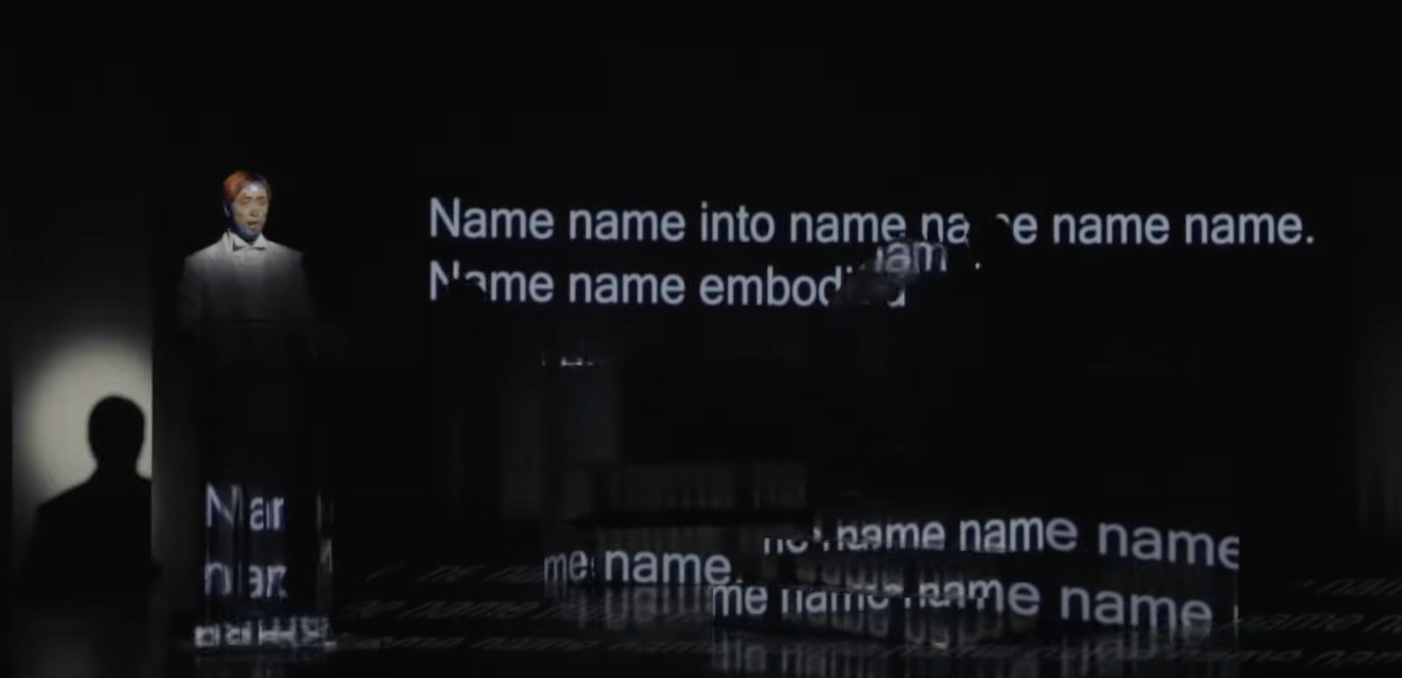
----------------------------------------
Glass, Philip, and Robert Wilson. "Act I "Train"" from Einstein on the Beach. Composed in 1975. Performed 2012. Performed by the Brooklyn Academy of Music, 4hrs 30 mins.
Photo courtesy of Sara Krulwich/The New York Times.
10: Joseph Earp
Joseph Earp
Earp, Joseph. A Little Swim. 2023, Acrylic on canvas, size unknown, Instagram, https://www.instagram.com/p/CvtjepfL30U/
Earp, Joseph. Paula Rego. 2023, Acrylic on canvas. size unknown, Instagram, https://www.instagram.com/p/CsvMZlLr55n/
-
Joseph Earp is a writer and artist based in Eora. He has shown me that it's valid and indeed very possible to combine text with artwork. As a very literary person himself, words and writing don't have to be a distraction or deviation from making art - it can be the art itself, or at least a vital part of it.
His rough, art naïf style is really compelling too - almost like childrens' drawings or sketchy comic books turned into paintings but with figures from pop culture and the artists' life all imbued with a palpable three-dimensionality.
It reminds me that painting can be coarse, playful and actually fun! It doesn't have to be perfectly smooth or detailed to be attractive.
2 October 2023
-----------------------------------------------------------------------------------------------
Examples of my work featuring text below
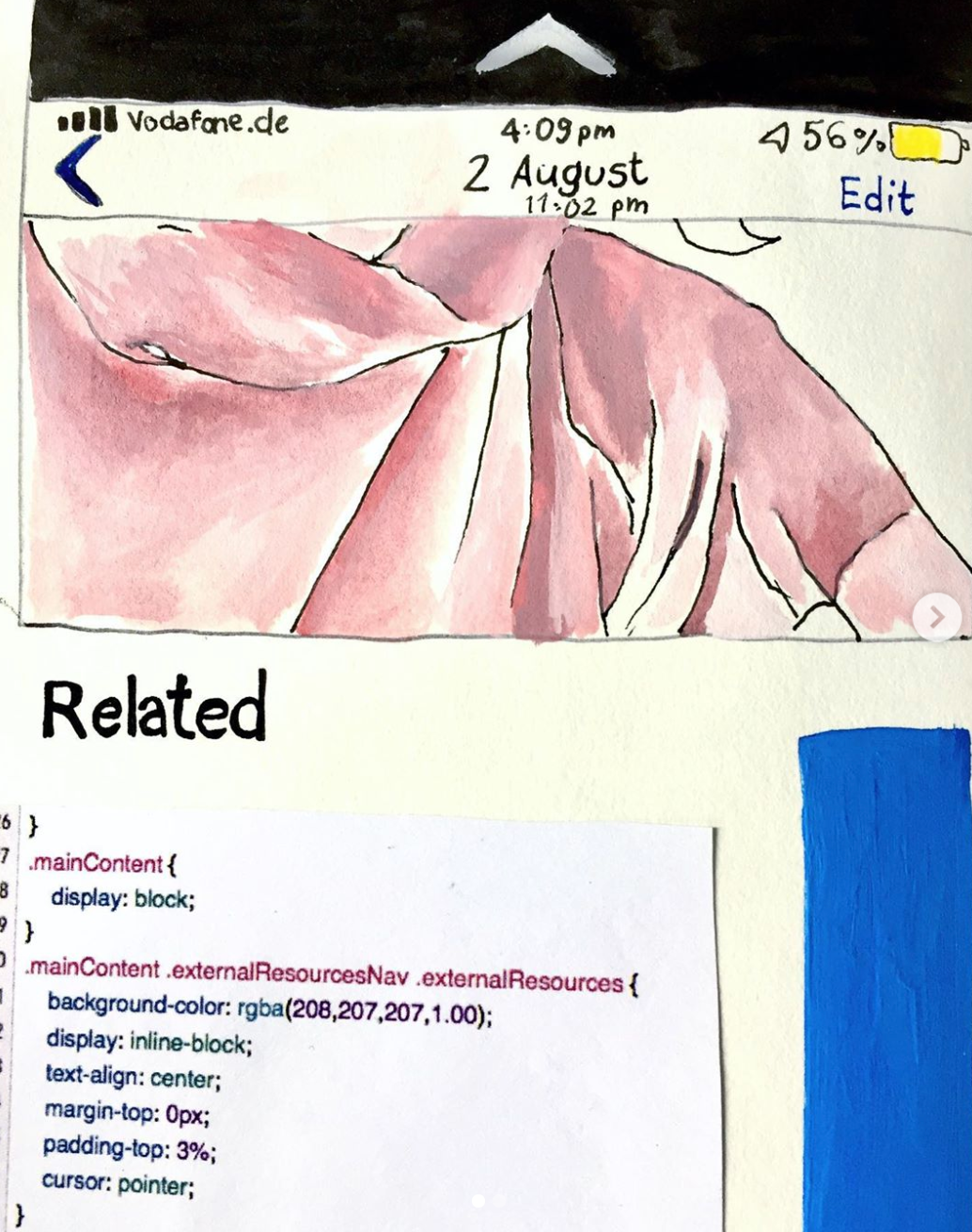
Excerpt from #journal sketchbook, mixed media on paper, 2019.

The Bottle, framed digital painting, 2021.
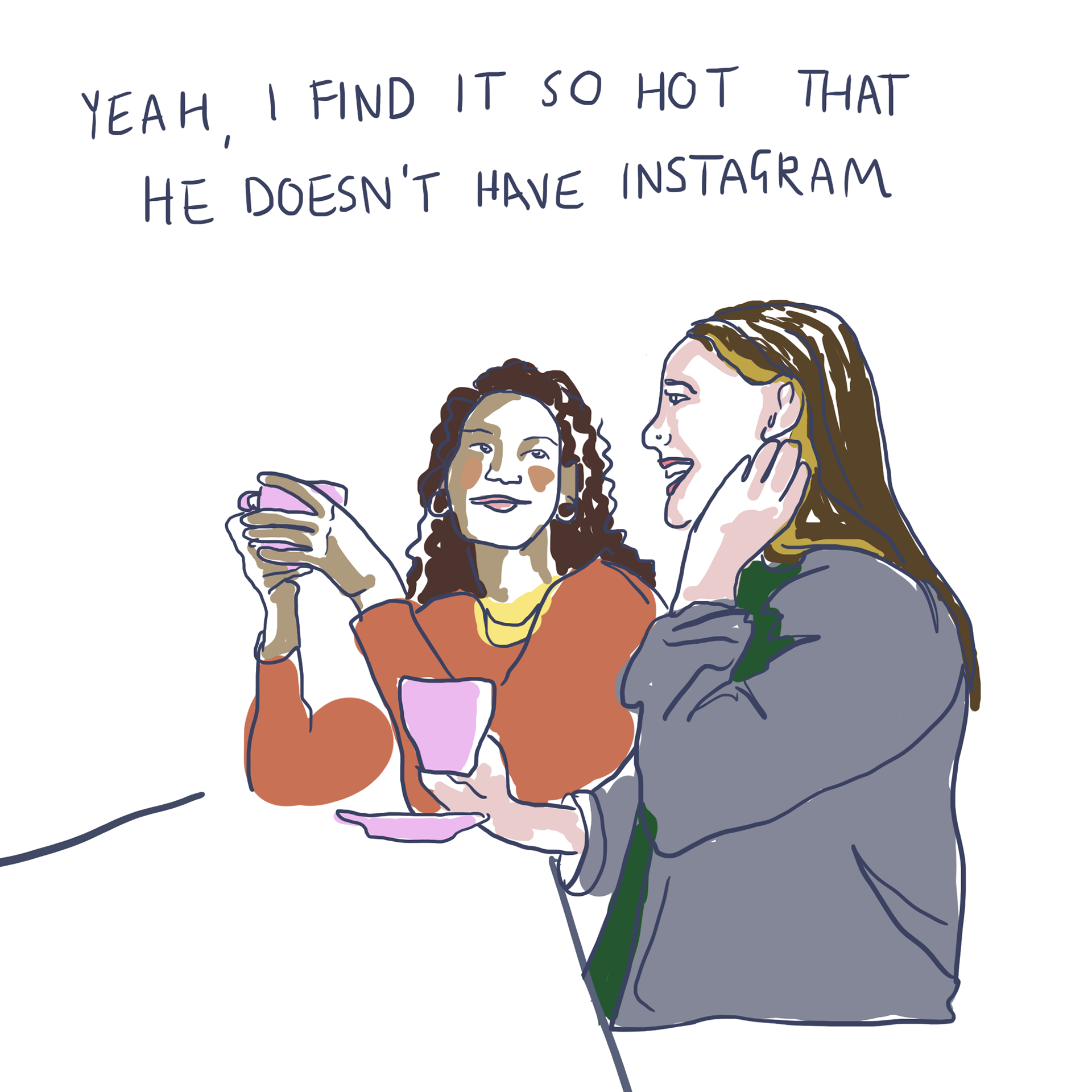
Doesn't have Instagram, digital illustration, 2023.

Thought i, gouache, acrylic and marker on paper, 2023.
11: Liberation Day
Saunders, George. "Liberation Day." In Liberation Day: Stories, 2-61. New York: Random House, 2022.
Enright, Anne. "Liberation Day By George Saunders review – a hell of a ride." Guardian, October 20, 2022. https://www.theguardian.com/books/2022/oct/20/liberation-day-by-george-saunders-review-a-hell-of-a-ride
-
Oh my, George Saunders is a master of the short story. Each collection of Saunders' work is like being at a fairground and going on multiple carnival rides, each themed as a satire of a particular aspect of contemporary American life. They're so brilliant. This story is my current favourite for its sharp observation of moral character in bizarre circumstances and inventive analogy-within-analogy of freedom and colonialism.
As Anne Enright observes, "the characters in these absurdly funny stories are trapped by hyper-capitalism and their own foolishness" and also remarks succinctly that:
"Saunders invents these joke prisons in order to remind the reader of the various prisons – economic, psychological and spiritual – which we build for ourselves."
8 October 2023
12: Temple
Pham, Rel. TEMPLE. 2022-23, Mixed media installation. Melbourne Now. The Ian Potter Centre: NGV Australia.
-
I saw this in Melbourne Now - it was my favourite piece.
Entering, there were fans buzzing and screens whirring with computer graphics. Reminiscent of 80s/90s sci-fi video games and films, it made me think of Blade Runner (the original) and Ghost in the Shell (also the original). Similar to that film's title, the spooky poignancy of the ghost in the machine idea was ever-present, but in a neon-digital-post-apocalyptic way. The vibe of the place (it was more of a place than a room or installation) felt haunted but by a polluted, subterranean human-less future where data, electricity, long lost poems and big grey clouds reign supreme.
12 October 2023
13: Room in New York
Hopper, Edward. Room in New York. 1932, oil on canvas, Sheldon Museum of Art.
-
I have a lot to say about Edward Hopper, but I can't think of words which aren't terribly hackneyed, so I'm going to leave this post mostly silent.
15 October 2023
14: K VII,
Moholy-Nagy, Lazsl0. K VII, 1922, oil paint and graphite on canvas. Tate.
-
Another abstract artist (alongside Frankenthaler, whose work is nevertheless very different to this) whose work I find really inspiring for my own forays into abstract painting. Technically more a 'constructivist', I'd nevertheless call Moholy-Nagy mostly abstract. I don't have the energy to plunge entirely into modernist history so I'll stop that thought in its industrialised tracks, apart from saying that I love the segmented nature of this painting and see it perhaps as related to the ~ buzz word ~ atomisation that was happening at this point in time.
This painting's most obvious attraction for me is in its rectangles and lines, something that I love to employ in my own work.
16 October 2023
-----------------------------------------------------------------------------------------------
Examples of my work featuring rectangles and lines below
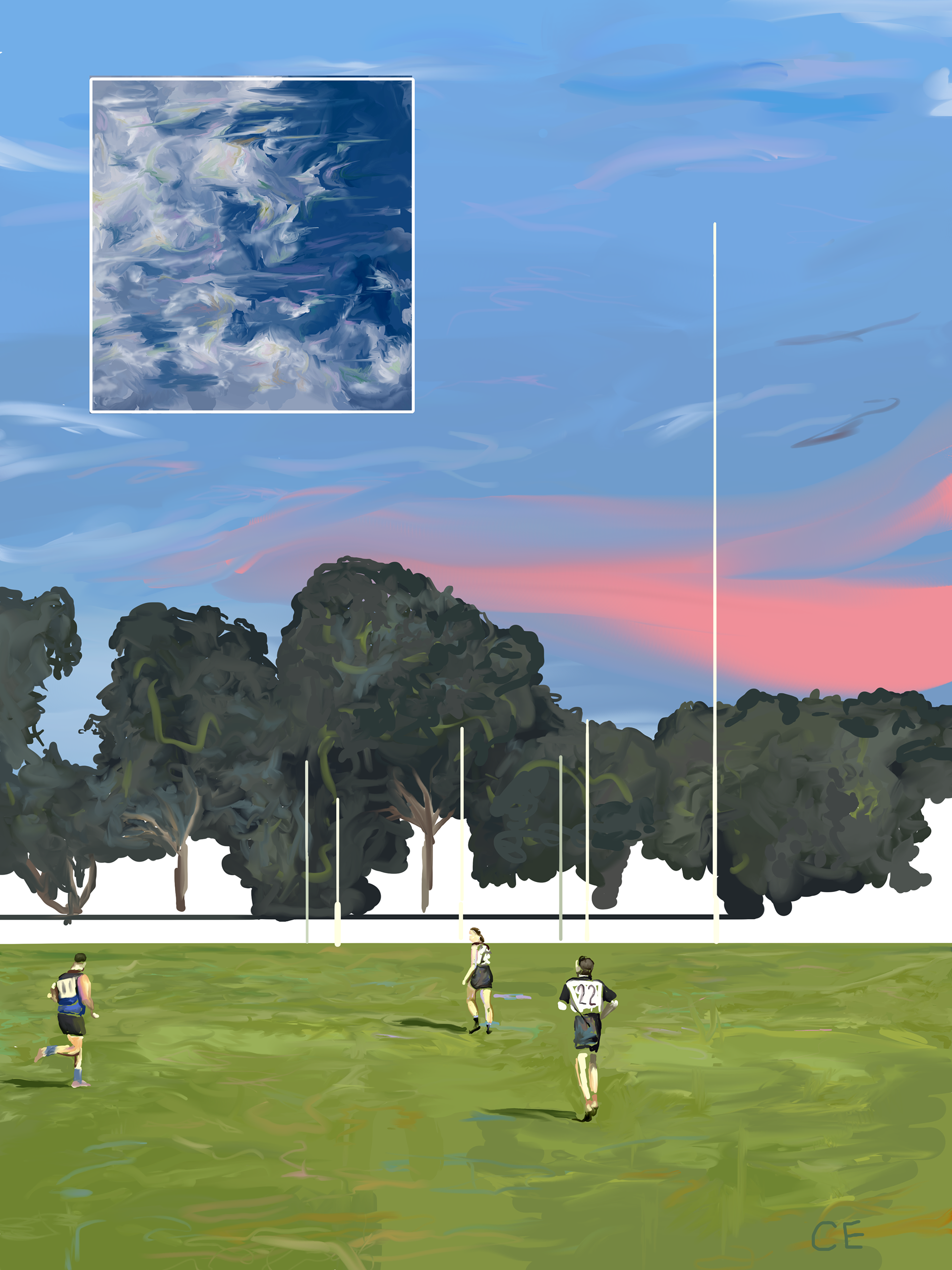
Late September, digital painting. 2023

Fish Collage, acrylic on canvas, 2022-23.
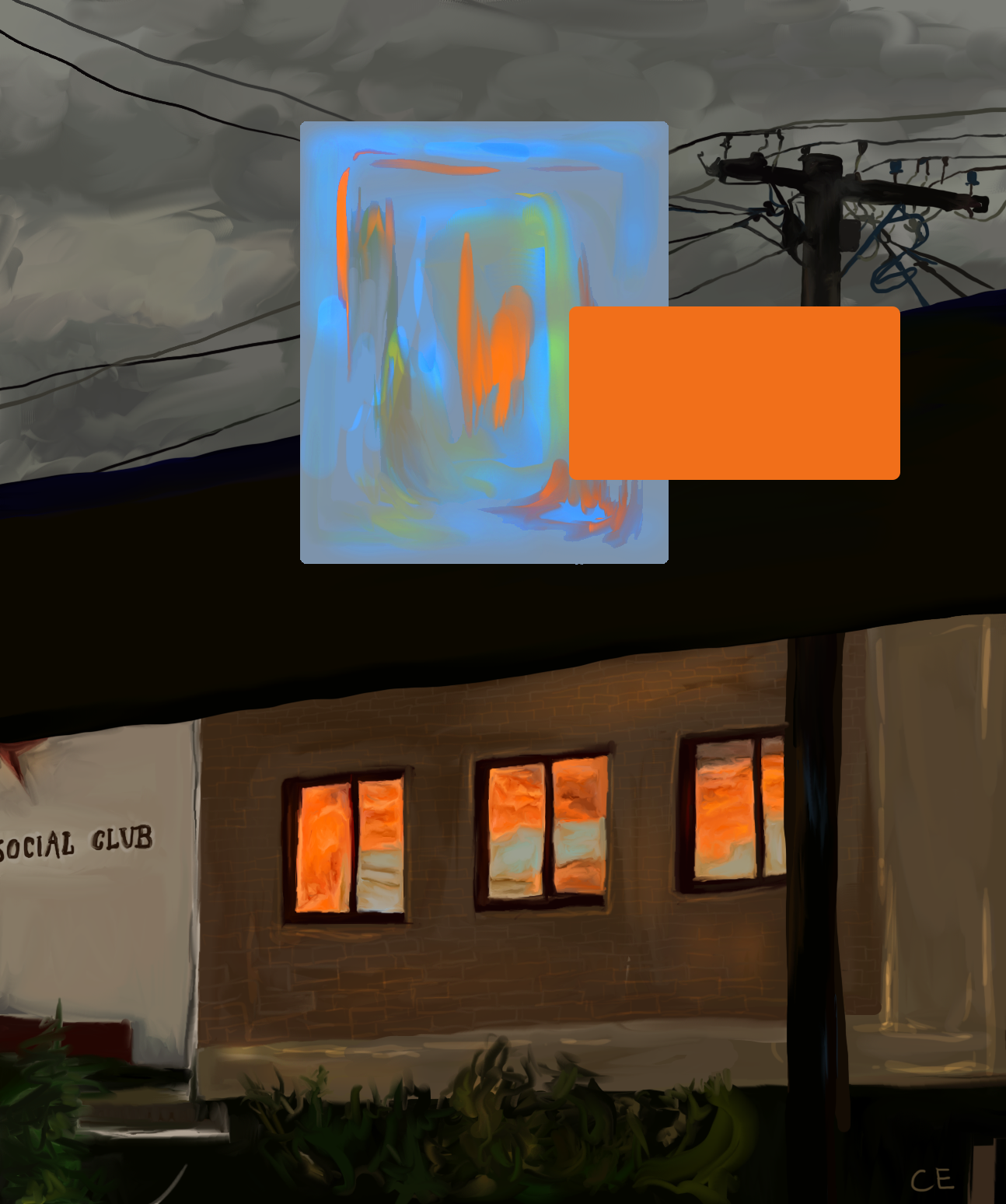
Social Club, digital painting, 2022.
15: The Airport
Akomfrah, John, The Airport. 2016. Video/Film. 3-channel HD colour video installation, duration unknown.* Lisson Gallery.
* From memory each screen is approximately 25 minutes, on loop.
-
I saw this piece on an art history subject trip to New York in 2016, before I realised that what I really wanted wasn't to do art history but to be an actual artist. A fair few years later, and I'm making my own video art - yes, I acknowledge that it isn't Akomfrah quality, but it's a nice thing to realise whilst I'm writing this reflection.
The three-channel film is a dreamlike, poignant and slightly sci-fi inquiry into the aftermath of Greece's economic crash of 2007-8. Filmed in and around an abandoned airport, it also explores collective memory, loss, globalisation, and is formally fascinated with temporality. It was a hot day in Chelsea but I was captivated by this film and stayed in the vigorously air-conditioned room for the entire film, twice - though my sense of time was pushed askew and for a while I myself was completely lost in the surreal landscape of Akomfrah's work.
17 October 2023
----------------------------------------------------------------------------------------------
Through my research alongside my studio practice this year, it has become apparent that my work is overwhelmingly preoccupied with ‘framing’ experience as a whole. Some critical frameworks, however, that could be applied and have influenced my work over this semester and before include Phenomenology, Feminism, Post-Dualism/Anti-Cartesianism, and semiotics/language. These frameworks reverberate through the artists in my dossier.
Framing in my practice can be seen visually/formally as well as through conceptual means. If we take it visually, generally in a painting sense, the framing exhibits itself through rectangles and a mashing together of diverse stylistic languages. The rectangles essentially function as windows, thus literally framing whatever is inside them for closer inspection. Inside might be a block of colour or an everyday scene; something banal and/or unclear. A few key influences from the dossier would be Moholy-Nagy, Frankenthaler, Hopper and Weerasethakul.
I have increasingly realised that my work is concerned with human performativity, which has been clarified and further inspired by lectures and conversations around dualism and phenomenology. I’m intrigued by how we must perform in order to be a part of the social body and I see echoes of Judith Butler and feminist critique in this. Sin Wai Kin has been a big influence this semester in their critique on gender and the performance of the everyday (a phrase I’ve taken from sociologist Erving Goffman’s seminal work of the same title).
Another influence in the performance of the everyday is Sun & Sea (Marina) and Clark Beaumont’s work; both of these artworks/practitioners are essentially performing everyday actions (being at the beach, being in social contexts) but with a few dials glitching.
In the sense of painting, I look to the uncanny beauty of Edward Hopper and Paula Rego. Hopper’s work in particular, as well as Völker’s Bahnhof demonstrates the anomie of the modern condition, even more relevant now in contemporaneity, the atomisation of individualistic western society emphasising this further. This, with the hum of the ‘transcendent’ beneath, is essential for understanding and parsing the absurdities of the world within my practice.
Another means of exploring the everyday is, of course, through language. As I’ve come to see it, words are just vehicles that may have cultural/sonic/onomatopoeic resonances, but otherwise are ‘empty’, though language in a Lacanian sense is “the root of culture”. So it could be surmised that to play with language is to play with culture, a performative act integral to my practice which has been influenced by creative practitioners Laurie Anderson, Clark Beaumont, George Saunders, the sung works of Philip Glass, and Sin Wai Kin amongst others.
Involving music for aesthetic effect and to highlight absurdity/poignancy/performativity has increasingly become a part of my practice this year as well. Singing, as in Sun & Sea (Marina) and Einstein on the Beach (and also in ‘Liberation Day’) is particularly of interest through its magical elevation of speech and exploration of the human body’s affordances as well as its sense-making abilities.
